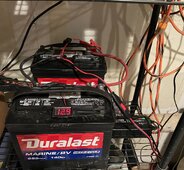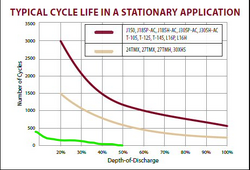DXHum
New Member
- Joined
- Jun 1, 2020
- Messages
- 57
With lead-acid batteries, there is no "set it and forget it". It only took 4 or 5 lead-acid battery deaths for me to learn this simple lesson. These batteries are for the long-term storage of power.
I just invested in two brand new lead-acid batteries ($100.00 each) and I would like to get a few good years out of this new configuration.
So what should my maintenance practices be? How do I extend the life of my lead-acid batteries? Below is a picture of my two new batteries and how I will wire them in their permanent spot. Considering that I am using them for long term storage, should I take them off the NOCO and put them on "Battery Tenders" (12v 1.25A)?

I just invested in two brand new lead-acid batteries ($100.00 each) and I would like to get a few good years out of this new configuration.
So what should my maintenance practices be? How do I extend the life of my lead-acid batteries? Below is a picture of my two new batteries and how I will wire them in their permanent spot. Considering that I am using them for long term storage, should I take them off the NOCO and put them on "Battery Tenders" (12v 1.25A)?




